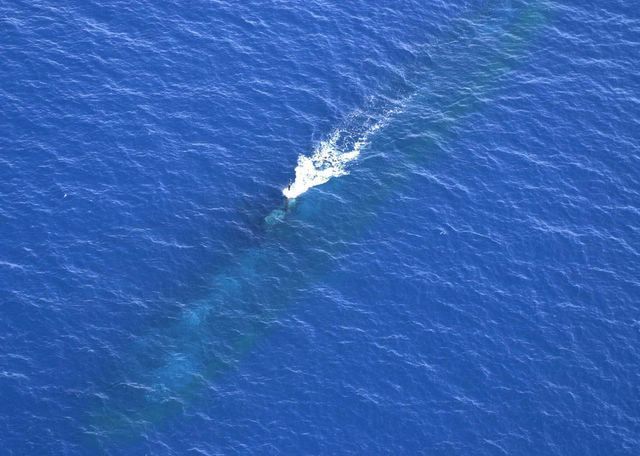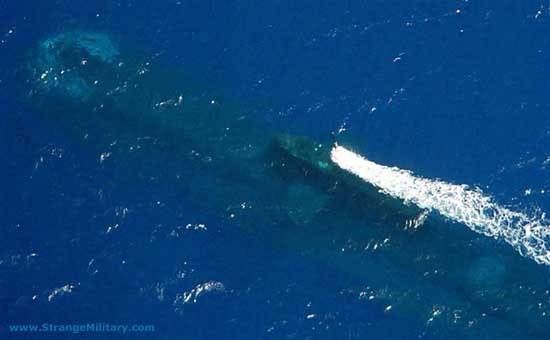
|
|
SUBSIM: The Web's #1 resource for all submarine & naval simulations since 1997
 |
SUBSIM: The Web's #1 resource for all submarine & naval simulations since 1997 |
|
|
 09-15-15, 07:40 AM
09-15-15, 07:40 AM
|
#1 | |
|
Captain
 Join Date: Aug 2009
Posts: 481
Downloads: 71
Uploads: 3
|
Quote:
Taking the example of a american an-m64 (which is pretty typical of 500 lb/250kg bombs of the era) Minimum Safe Release Altitude: 1,500 feet Striking Velocity from 1,500 feet release: 450-750 feet/second (depends on dive angle and aircraft speed! Will be higher from a higher release altitude!) Contact with the water would slow it down some, but we'll simplify here. Depending on the delay setting and release speed, a miss will explode at a depth of 45-75 feet with a delay of 0.1 seconds. Similarly, explosion depth would be 225-375 feet with a 0.5 second delay setting. Just like a depth charge, if it is close and explodes underneath you, it could seriously mess up your boat. Long story short, I advise you dive deep the second you make contact with an aircraft. Though they have to get pretty dang close to spot you submerged at all.
__________________
My SH4 LP Last edited by ColonelSandersLite; 09-15-15 at 10:59 AM. |
|

|

|
 09-15-15, 07:43 AM
09-15-15, 07:43 AM
|
#2 |
|
Navy Seal
 |
And don't forget, they dropped depth charges too. How can you tell from the conning tower whether what the plane dropped was a depth charge or a bomb? And if it kills you did it make a sound?

__________________
Sub Skipper's Bag of Tricks, Slightly Subnuclear Mk 14 & Cutie, Slightly Subnuclear Deck Gun, EZPlot 2.0, TMOPlot, TMOKeys, SH4CMS |

|

|
 09-15-15, 08:00 AM
09-15-15, 08:00 AM
|
#3 |
|
Captain
 Join Date: Aug 2009
Posts: 481
Downloads: 71
Uploads: 3
|
Now, I remember a fighter pilots account where he spotted a submerged submarine and tried shooting at it a few passes. I don't remember his nationality but he wasn't american so we're probably talking some flavor of .30 cal machinegun. Complete waste of ammo there.
__________________
My SH4 LP |

|

|
 09-15-15, 08:52 AM
09-15-15, 08:52 AM
|
#4 |
|
Navy Seal
 |
Some actual shots of submarine at periscope depth:
   There are times where the sub is much clearer than these photos show. I have seen a photo of a nuclear sub from straight up that was really scary in the extreme visibility of the sub, but that was back in 2007 and I can't find the photo now.
__________________
Sub Skipper's Bag of Tricks, Slightly Subnuclear Mk 14 & Cutie, Slightly Subnuclear Deck Gun, EZPlot 2.0, TMOPlot, TMOKeys, SH4CMS Last edited by Rockin Robbins; 09-15-15 at 09:06 AM. |

|

|
 09-15-15, 09:48 AM
09-15-15, 09:48 AM
|
#5 | |
|
Soundman
 Join Date: Aug 2015
Location: Australia
Posts: 147
Downloads: 42
Uploads: 0
|
Quote:
|
|

|

|
 09-15-15, 10:58 AM
09-15-15, 10:58 AM
|
#6 | |
|
Captain
 Join Date: Aug 2009
Posts: 481
Downloads: 71
Uploads: 3
|
That was supposed to be 1500, sorry edited above. Still, I don't know how close you think bombers actually got to their targets. Fuses typically wouldn't let the bomb even arm if released under a thousand feet to prevent destruction of the aircraft. Dive bombers of all nations typically released between 1000 and 3000 feet depending on payload and the aircrafts specific characteristics (i.e. it's ability to pull out of the dive). 1,000 is really point blank range, 1,500 and even 2,500 are not uncommon release altitudes at all.
Quote:
That's purely because the game designers knew something about submarines, but not aircraft. Alternatively, they decided to do it the way they did in the name of game balance to give you good odds of shooting down aircraft with the AA guns. The way the aircraft operate in the game is completely and totally unrealistic.
__________________
My SH4 LP Last edited by ColonelSandersLite; 09-15-15 at 11:04 AM. |
|

|

|
 09-15-15, 07:47 PM
09-15-15, 07:47 PM
|
#7 |
|
Soundman
 Join Date: Aug 2015
Location: Australia
Posts: 147
Downloads: 42
Uploads: 0
|
I think I am not writing enough words and therefore coming across as an idiot who knows nothing about bombing, fuses etc. Let me start by saying that I know a lot more about aircraft than submarines and that flight sims were my first love of war simulation games. I agree totally that the way the game implements aircraft is unrealistic, the reason you supplied of giving the player a chance is probably spot on, since developers have to cater for the realists and the arcade players equally in order to maximise profit.
I don't think for one second they got closer than the fragmentation envelope of the bomb they were employing. I also am under no illusion that the bomb will fail to detonate after impact with the water becasue of damage to the bomb. After all they are designed to hit the ground at supersonic speeds. Furthermore I am not stupid enough to believe that Mythbusters provide anything more than proof of concept experiments. Your point about increasing projectile surface area / weight being confounded by muzzle velocity is correct. However the key concept, that high velocity impact with the water dramatically changes the projectiles behavior, is valid. My query revolves around how deep is deep enough both IRL and in the game. I have not seen aircraft bombs with delay fuses yet so the first question is how damaging would a surface detonation be to a submarine at various depths. I suspect not much at periscope depth The second question, which you got me thinking about, was how deep will a bomb penetrate underwater before detonation. Lets for a second assume that skipping of the bomb is a non issue. My feeling (please note how I distinguish between what I think by using emotive terms and what I can prove as fact) is that the bomb will lose almost all of its airborne energy upon impact with the water greatly reducing the speed at which it travels underwater particularly in the direction of depth. To get to 40ft with a 0.1 second fuse it is easy to see that it has to travel downward at 400ft per second, a value which I find very hard to believe. A half second fuse which you suggested would detonate at 225-375 feet deep would require downward motion equal to the impact velocity. This would defy the laws of physics. I found a book today entitled "Britain's Anit-submarine Capability 1919-1939" which stated that one report concluded that "for entry velocities of more than 250fps the trajectory curvature may be so great that accurate bombing of submarines at depths greater than 50ft would be impossible". I have probably taken this quote too far out of context but there must be a reason why planes carried depth charges instead of bombs. |

|

|
 |
|
|
